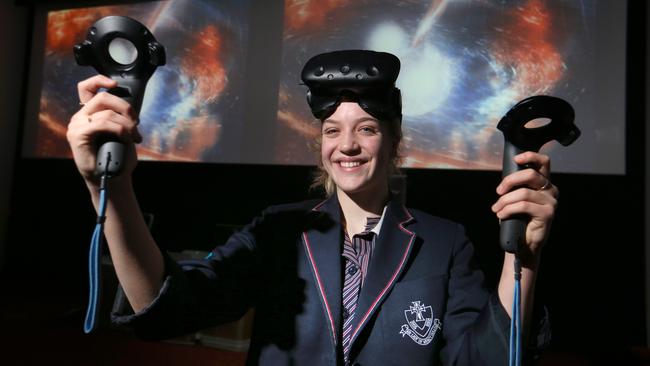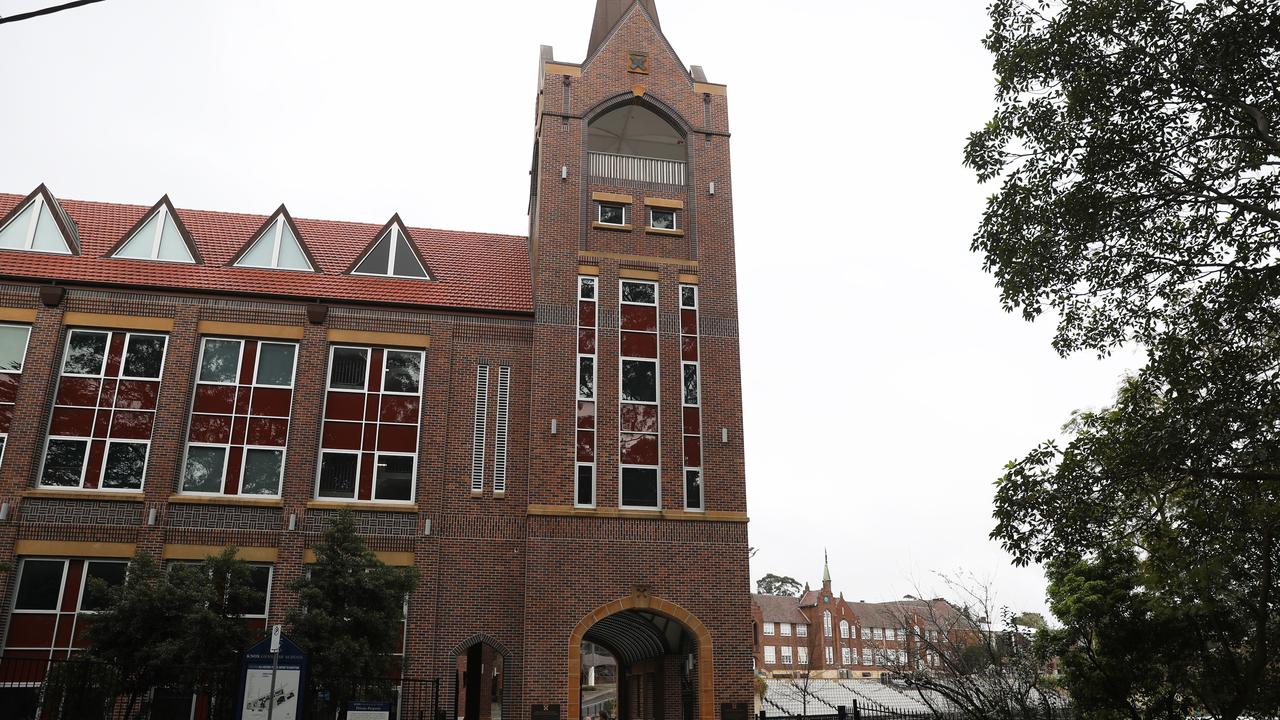Students embrace virtual reality to better understand the galaxy
A very different kind of science lesson is set to enter Australian classrooms.

A very different kind of science lesson is to enter Australian classrooms as students are plunged into distant galaxy formations and surrounded by colliding neutron stars through a virtual-reality program.
Education Minister Simon Birmingham will announce today that a software program, developed by the ARC Centre of Excellence for Gravitational Wave Discovery in Melbourne, will be rolled out in public schools, aimed at encouraging students into STEM subjects and physics.
Schools will be able to use the program on PCs and smartphones, but also high-end virtual-reality technology devices such as the Oculus Rift headset.
The director of the centre, Swinburne University professor Matthew Bailes, said the software would help engage students in the science of gravitational waves.
The specialised science recently made international headlines when a team of global scientists — including Australians such as Professor Bailes — tracked a burst of gravitational waves to its source and observed two colliding neutron stars for the first time.
“We have a portable system we will be taking to schools, and it will be flying students to distant places in the universe,” he said. “If you put the headset on you feel you are in outer space ... it’s a surreal experience.”
The professor said one of the strengths of the program was the ability for educators to use it with technology many schools already had. “There is always an issue with what we term the digital divide,” he said. “It’s quite easy to develop content for rich kids with high-end games but ... we are aiming to get the kids partaking in a space mission where they all get the chance to use the high-end gear or have a role in a scenario plan where, depending on the age group, they are learning about some aspect of physics or science.”
Professor Bailes has spent years developing his 3D presentation tool AstroTour, an interactive educational experience that has been shown to 25,000 students. He said watching kids respond so positively to the experience convinced him it could work more broadly.
“My favourite was a little five-year-old girl at a public event at Federation Square (in Melbourne) who put the headset on and was just squealing with delight,” he said.
Year 11 student Samarra Ewing-Crellin, from Our Lady of Mercy College in Heidelberg, said it was an exciting initiative.
“I love black holes, colliding stars and gravitational wave science, all of it,” she said. “Using VR and other tools like this program might help students to realise just how cool this stuff is and maybe consider studying science.”


